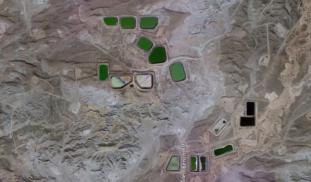Another great day in the field!
In the image below, which was taken earlier today, you can see the pollution in the Uintah basin where the field site is located. The pollution is trapped near the surface by a temperature inversion, which prevents the pollution from being transported away, allowing it to build up at the surface. You can see the mountains in the background peeking up over the pollution.

The image below shows our high volume air sampler (Hi Vol), where we are collecting aerosol samples for measurements of ion concentrations and nitrate isotopes. The Hi Vol pumps air through a filter, the aerosols stick to the filter, and we then take the filters back to the lab for analysis.

Tomorrow I head back to Seattle. I need to go back and teach my class next week! Maria will stay here in Utah, and we will continue to send updates on her work. Thanks again for helping to make this all possible!










4 comments